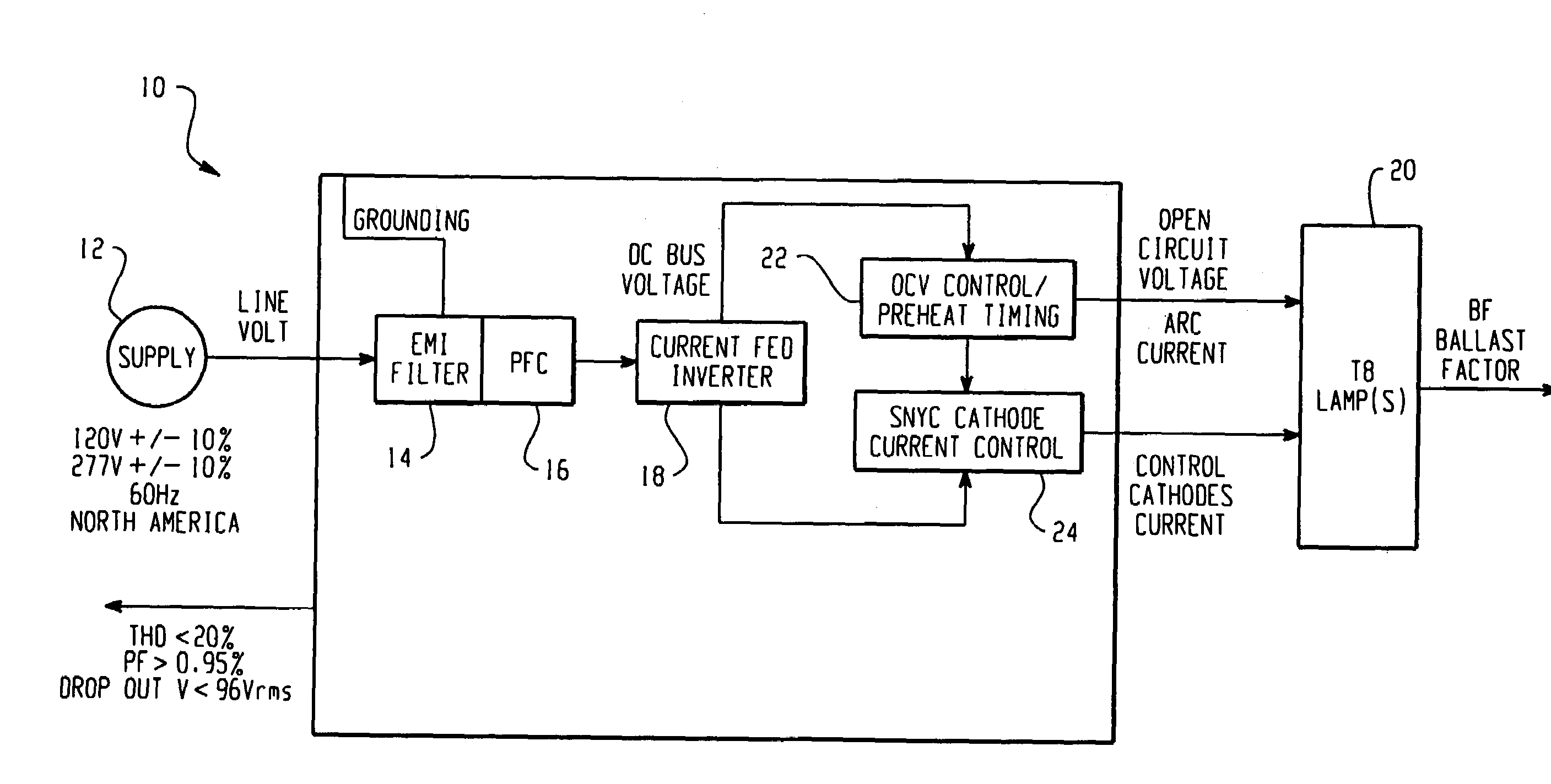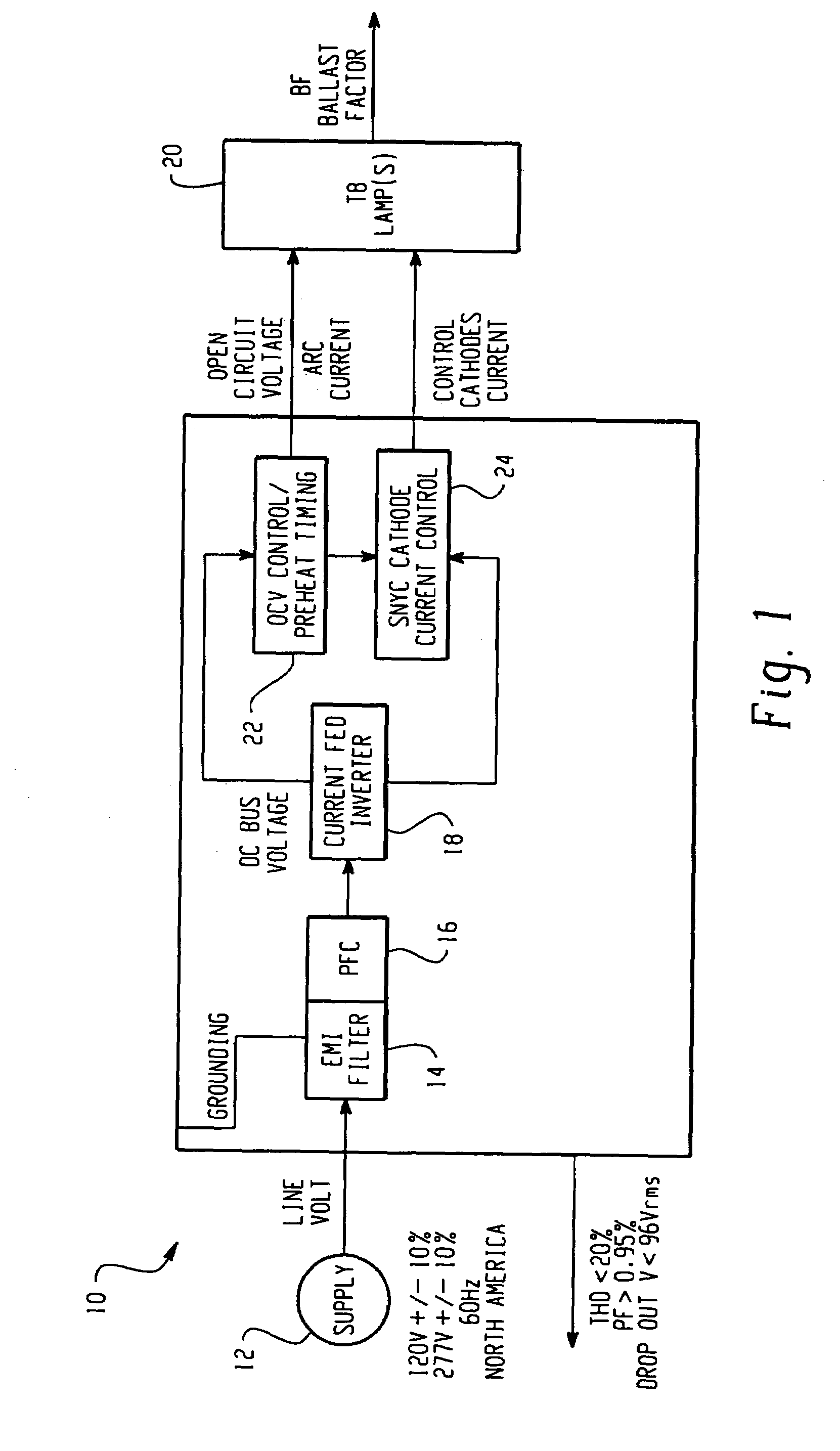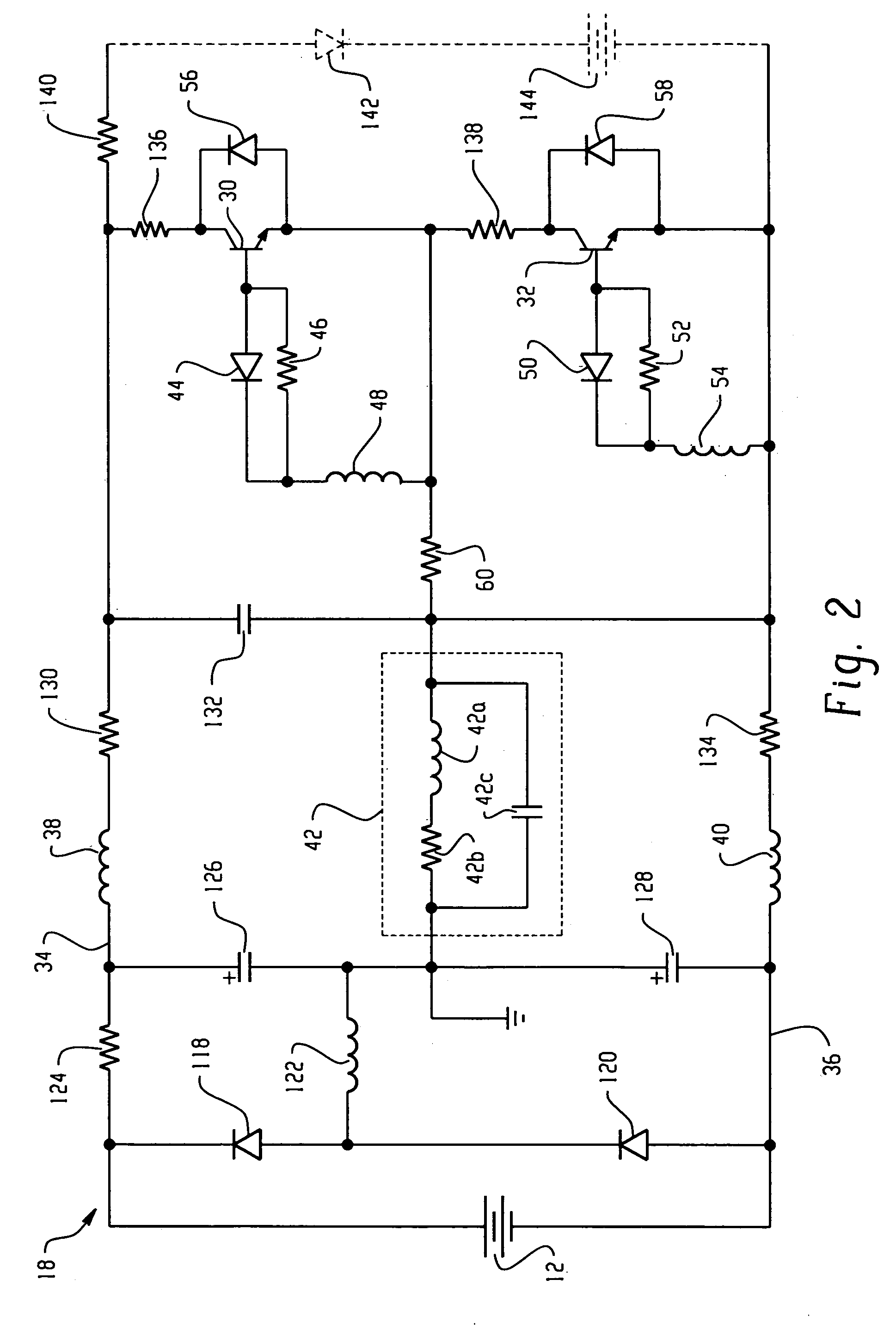Parallel lamps with instant program start electronic ballast
a technology of electronic ballast and parallel lamps, which is applied in the direction of electric ignition installation, mechanical equipment, machines/engines, etc., can solve the problems of delay, drawback, and not being able to detect the delay, and still providing current to heat the cathod
- Summary
- Abstract
- Description
- Claims
- Application Information
AI Technical Summary
Benefits of technology
Problems solved by technology
Method used
Image
Examples
Embodiment Construction
[0026]With reference to FIG. 1, a block diagram of one embodiment of a lamp ballast 10 according to the present application is depicted. A voltage supply 12 provides an AC signal to the ballast 10. The voltage supply 12 can provide a wide range of input voltages, such as 120 V, or 277 V, as is typical for the United States. The line voltage signal is filtered by an EMI filter 14 and then is converted from AC to a DC bus signal by a power factor correction circuit (PFC) 16. The power factor correction circuit 16 supplies the DC bus signal to an inverter circuit 18, which may be a current fed inverter and which generates an AC signal for the powering of lamps 20. This design permits a parallel lamp arrangement without multiple inverters or multiple ballasts. In certain embodiments the power factor correction circuit 16 will make the ballast input line current distortion low, for example, less than 10% for a 120 volt input and less than 20% for a 277 volt input. It is to be appreciated...
PUM
 Login to View More
Login to View More Abstract
Description
Claims
Application Information
 Login to View More
Login to View More - R&D
- Intellectual Property
- Life Sciences
- Materials
- Tech Scout
- Unparalleled Data Quality
- Higher Quality Content
- 60% Fewer Hallucinations
Browse by: Latest US Patents, China's latest patents, Technical Efficacy Thesaurus, Application Domain, Technology Topic, Popular Technical Reports.
© 2025 PatSnap. All rights reserved.Legal|Privacy policy|Modern Slavery Act Transparency Statement|Sitemap|About US| Contact US: help@patsnap.com



